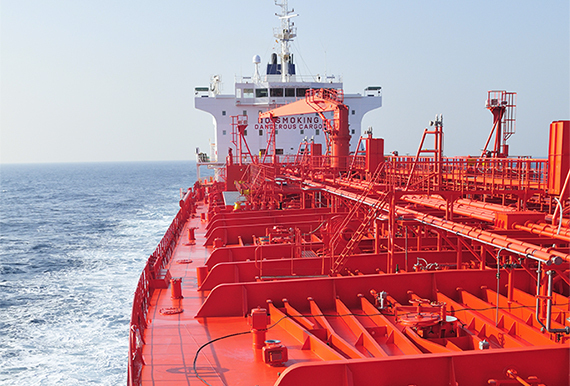More news
- Focus on the global coatings market: Global coatings market outlook
- Innovative coatings mitigate effects of deepening climate change
- View from the UK: Navigating chemical policy and sustainability
- Focus on adhesives: Unveiling unbreakable bonds – Testing redefines physical strengt...
- Focus on adhesives: Henkel and Covestro collaborate for sustainability of engineered wood ...

Joanna van Helmond, PPG Global Product Manager, Antifoulings, discusses the company’s latest marine coating innovation
PPG Sigmaglide® 2390 marine coating uses a fouling release technology that can help shipowners lower power consumption and carbon emissions and meet demands for higher performance with no adverse impact on the marine environment.
The biocide-free fouling release coating is based on PPG HydroReset™ technology, which modifies the coating when it is immersed in water to create a smooth, almost friction-free surface that marine organisms do not recognise and cannot adhere to. This enables vessels to maintain a clean hull and reduce drag, achieving power savings of up to 20%, a speed loss performance of less than 1% and up to 35% reduction in CO2 emissions in comparison to traditional antifouling coatings.
These performance benefits are achieved due to the incorporation of the PPG HydroReset technology into the 100% pure silicone binder formulation. In the presence of water, the technology reorganises the surface profile of the coating at a nano scale to generate a smooth, ultra-low friction surface (Figure 1). The low frictional resistance of the coating delivers significant, long-lasting hydrodynamic benefits.

Figure 1. PPG HydroReset™ technology representation
Using a 3-D laser profilometer, the surface profile of PPG Sigmaglide 2390 can be seen to be significantly smoother than conventional technologies, such as self-polishing copolymers containing copper or even the previous generation of fouling release technologies (Figure 2).

Figure 2. Surface comparison using 3-D laser profilometer (in dry conditions)
The surface exhibits an ultra-low surface energy and thus an essentially frictionless surface; water simply slides off it and marine organisms find it impossible to adhere to (Figure 3).

In co-operation with a leading, third-party institute, PPG performed computational fluid dynamics predictions for different ship models comparing PPG Sigmaglide 2390 coating to standard antifouling technologies. The results found that the coating delivered power savings of up to 20% whilst only experiencing a 1% loss of speed and up to a 35% reduction in CO2 emissions (Figure 4).

Figure 4. Power comparisons for four key vessel types
The reduction in CO2 emissions makes it easier for owners and operators to meet targets for reduction of greenhouse gas emissions under the International Maritime Organization’s energy efficiency (EEXI and EEDI) and carbon intensity (CII) requirements, which went into effect this year. The potential for emissions reduction means they can operate at an average one knot higher speed while remaining CII compliant.
In service, the coating can deliver up to 150 days of idle performance and owners and operators can expect no surface deterioration of the coating on the hull, or any leaching or surface porosity. This provides an extended lifetime of more than 10 years with minimal maintenance requirements.
PPG Sigmaglide 2390 coating is also suitable for electrostatic application, which provides high transfer efficiency, leading to lower paint consumption due to the tendency for less overspray together with a decrease in application time.
A vessel coated with PPG Sigmaglide 2390 can save two complete steps of treatment at a five-year redocking and can continue for another five years with no need for full blasting or application of a full topcoat. Overall, owners can expect to save, on average, 50% of their typical 10-year maintenance costs coupled with significant savings in fuel consumption compared to alternative premium hull coatings.
These benefits, combined with the power savings, provide an industry-leading return on investment for shipowners. Analyses of a typical Crude Oil Tanker and Bulk Carrier show a return on investment of less than a year (Figure 5).


Joanna van Helmond, PPG Global Product Manager, Antifoulings



